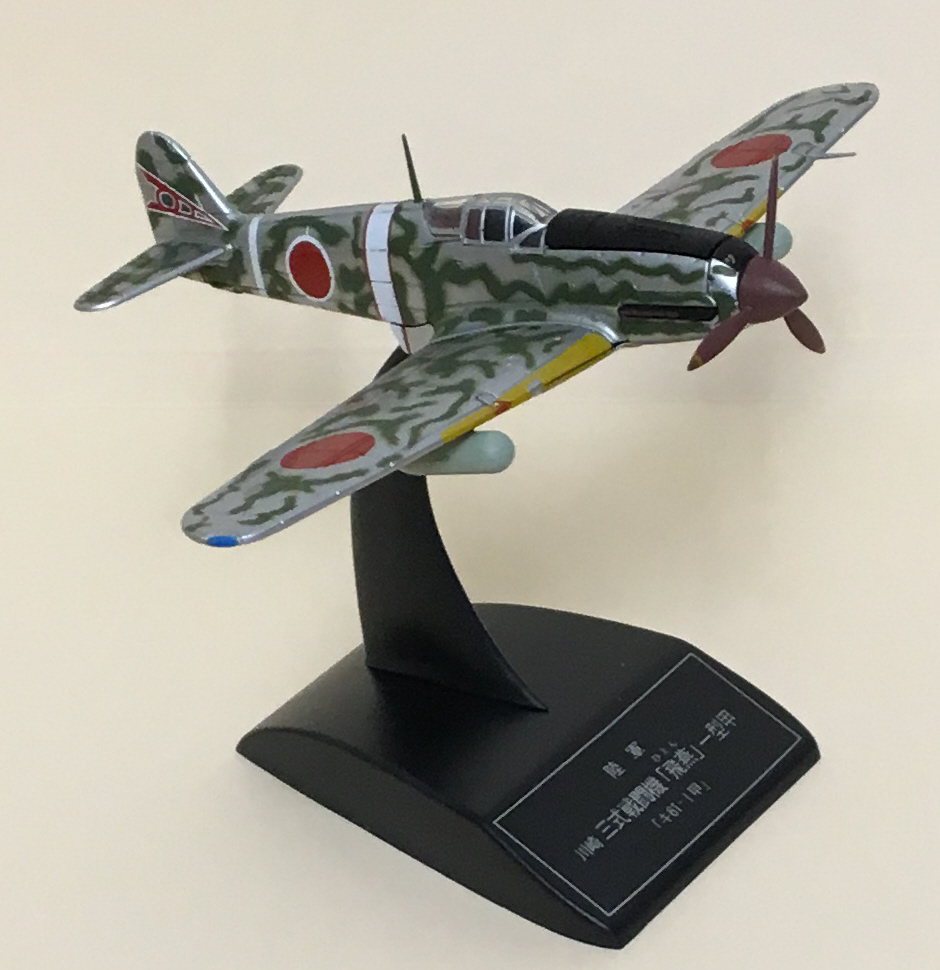FACTOIDS & TRIVIA
The Ki-61 Hein (allied code name "Tony") was designed in late 1939 as a
front-line fighter for the Imperial Japanese Army. It was the only the
Japanese fighter to use a liquid-cooled V-12 engine during World War
II. In fact, the engine was a licensed-built copy of the Daimler-Benz
DB 601A that was used in German and Italian fighter aircraft.
The inverted V-12 creates a particular fuselage shape so the
Ki-61 closely resembled the German and Italian designs. When
the
Ki-61 was first encountered by allied pilots, they often
thought
the Japanese were using Messerschmitt or Macchi aircraft! The Ki-61 was
fast and it was more agile than any other Japanese fighter, except for
the Ki-43 Hayabusa "Oscar". Its
biggest drawback, as with the German and Italian V-12 fighters, was
lack of range. To compensate, Kawasaki added two hard-point wing mounts
that could be used for external 53-gallon fuel tanks (more range!) or
bombs (fighter-bomber!). The earliest Ki-61's
(Ki-61-I) were
fitted with a pair of .303 inch machine guns in the wings and a pair of
20 mm in the fuselage. The .303 guns were quickly replaced with .50
inch machine guns to increase firepower in the Ki-61-I-Hei and
Ki-61-I-Tei. The Ki-43 was introduced for combat in early 1943 and its
pilots appreciated the self-sealing fuel tanks, heavier armor, agility
and dive speed. Allied pilots had to change their tactics with
the
Ki-61. While allied fighters could easily dive away from the
lightweight Ki-43 and A6M Zero, the Ki-61 could dive with, and
thus shoot down, allied fighters trying to "run away". Kawasaki
produced 2,654 Ki-61-I aircraft before the war ended.
KAWASAKI
Ki-61-I Hien "Tony"

Class: Fighter
Crew: 1
Engine: Kawasaki Ha-40 V-12 (1,159 hp)
Max Speed: 360 mph at 16,000 ft
Climb Rate: 2,990 ft/min
Service Ceiling: 38,100 ft
Range:
360 miles
Armament: 2 x .50 inch machine
gun
(fuselage mount)
2 x 20 mm
cannon (wing mount)
2 x 550
lb
bombs
Model Scale:
1:87
Back
to the Japanese
Combat Aircraft of WWII
Menu

